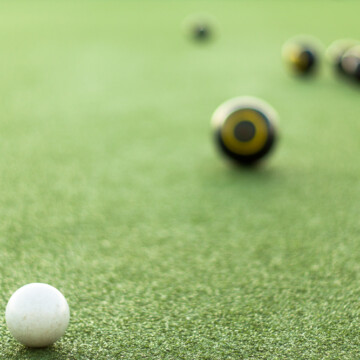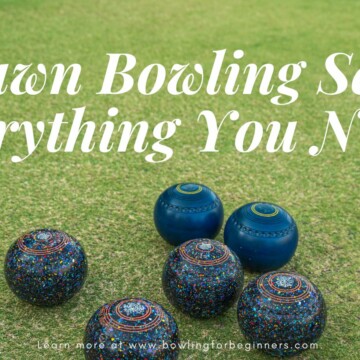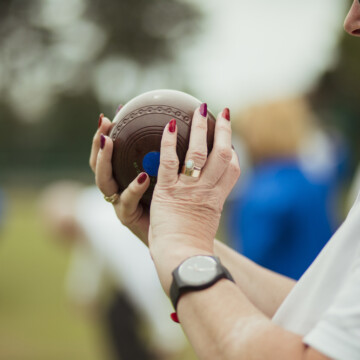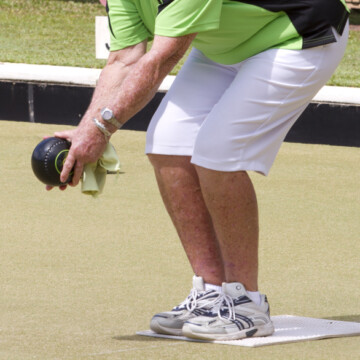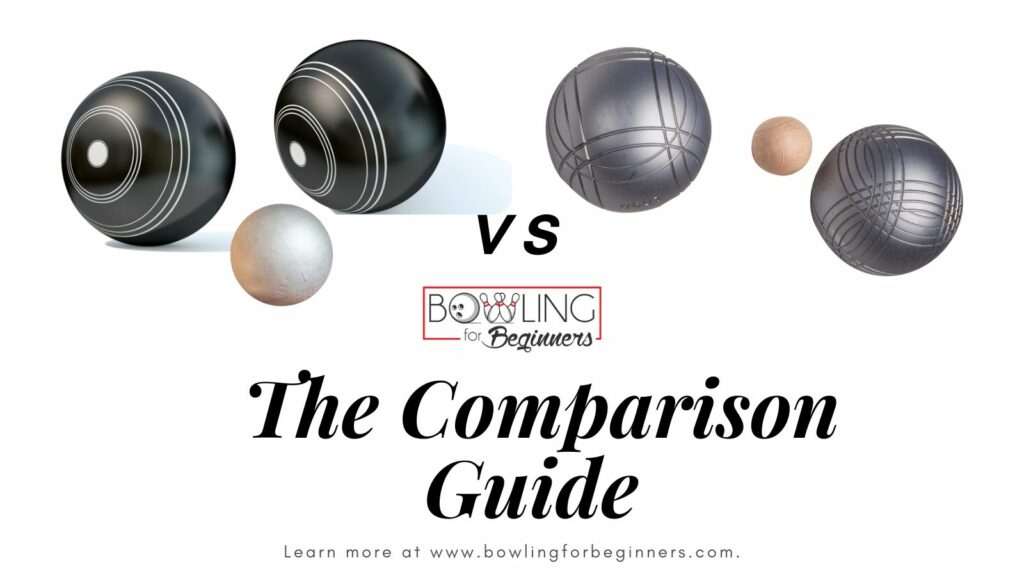
Lawn games like lawn bowling and bocce are gaining more and more attention in the U.S. and elsewhere. Thanks to the outstanding athletism displayed during the Common Wealth Games of 2022. At first glance, these games appear to be identical, but they differ in several important ways.
In this comprehensive guide, we give an in-depth comparison of lawn bowling vs bocce so you’ll be able to distinguish the difference and appreciate the uniqueness of both sports.
Contents
Lawn Bowling vs Bocce: 11 Main Differences
Let's not waste any time - it's time to explore lawn bowling vs. bocce. Many of the differences between lawn bowling and bocce may be difficult to decipher, especially if you’re new to either sport. But you’ll soon find out they have substantial variations in their origins, playing surfaces, equipment, gameplay, scoring systems, strategy, and more.
These differences, while not immediately apparent to the casual observer, greatly influence the tactics players use and the overall dynamics of each game. If you're looking for a more condensed version of the differences between these sports, read this article. For a comprehensive look at what makes these sports unique, keep on reading!
1. Origin and History
Bocce is one of the oldest known games, originating from about 5200 BC or earlier. The earliest evidence of the sport is an Egyptian painting of a couple of boys playing the sport. Despite its antiquity, the game retains its charm and is especially prominent in Italy and Italian-influenced communities across the globe.
Bocce has been an integral part of Italian culture for a long time, with courts often found in public squares, backyards, and special clubs.
Lawn Bowl has an equally rich Egyptian history, as founded by Egyptologists Professor Edda Bresciani and his team. Over the centuries, it has spread throughout the British Empire and is particularly popular in the United Kingdom, Australia, and New Zealand. The game once symbolized prestige, with dedicated lawn bowling rinks and bowling greens still a common sight in these countries.
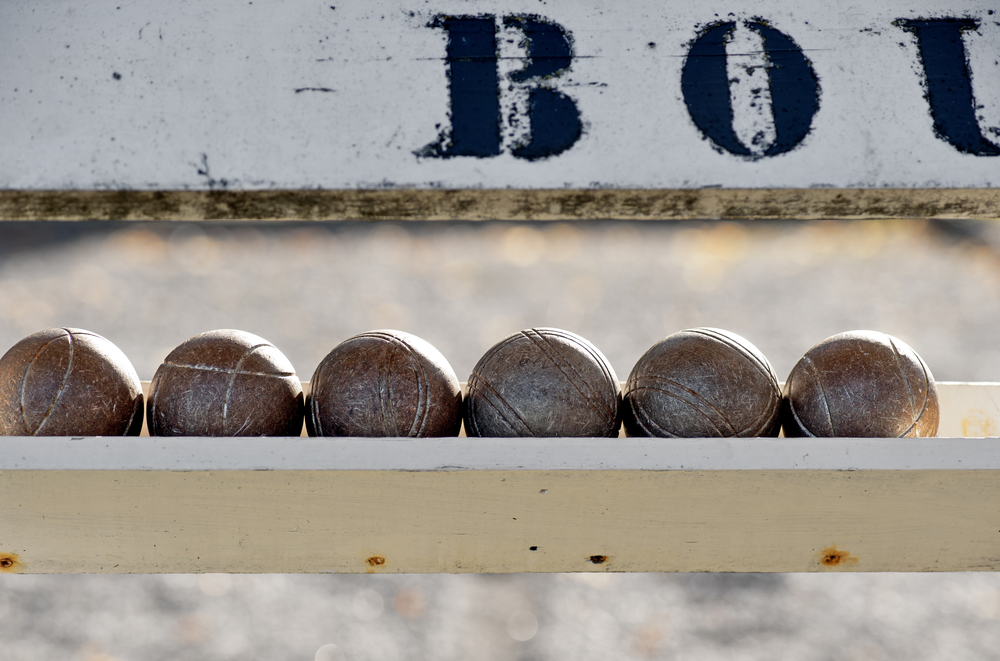
2. Playing Surface
The playing surface or court plays a critical role in players' strategies and how the game ultimately unfolds. Standard bocce ball courts are flat, level playing surfaces encapsulated by wooden boards or similar material. The dimensions are approximately 27.5 meters (90 feet) long and 4 meters (13 feet) wide.
This relatively compact space is covered with sand and crushed oyster shells, making the surface hard, enabling the balls to roll freely and somewhat predictably.
On the other hand, the playing surface for lawn bowls is smooth, meticulously manicured grass, known as "green." Greens are usually square and significantly larger than a bocce court, measuring up to 40 meters (131 feet) in each direction, and the grass is divided into playing areas called a lawn bowling rink. The large size and the condition of the grass can significantly impact the game, adding an extra layer of complexity.
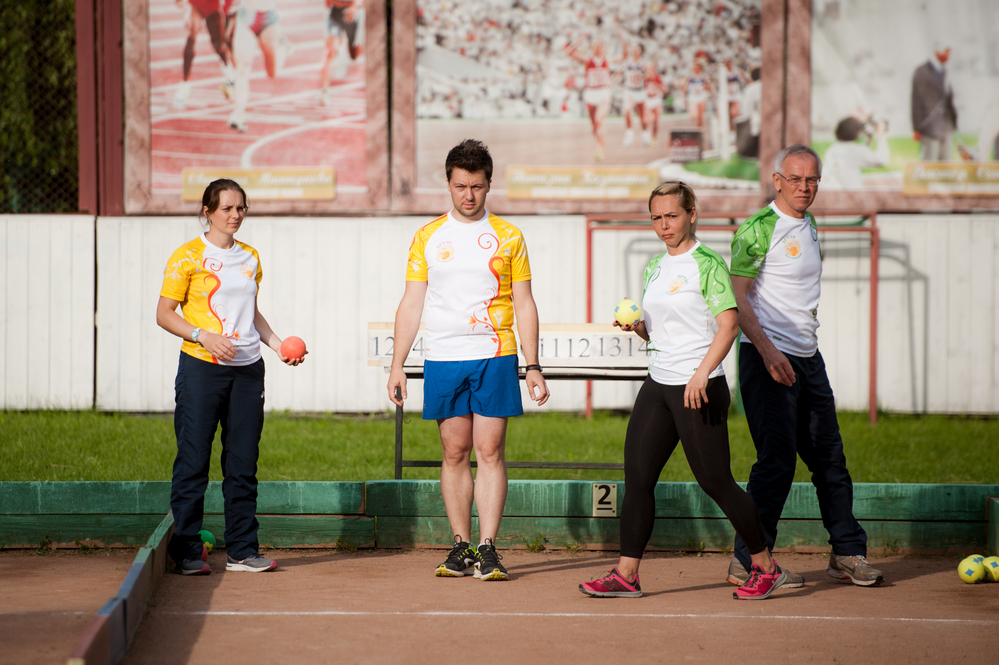
3. Equipment
The equipment used in Bocce and Lawn Bowls sets the sports apart physically and influences how the game is played. Bocce equipment includes eight large balls, usually made of a hard synthetic material, and one smaller target ball, known as the pallino.
Each team will have four balls to play Bocce Ball, differentiated by color or pattern. The balls are uniformly spherical and designed to roll straight, as they are perfectly round.
Contrastingly, lawn bowl equipment is very distinct. Players use larger and heavier balls, known as bowls, which are unique due to their slightly asymmetrical shape. They aren't asymmetrical in the same sense that Regular or Tenpin bowling balls can be.
They have a visibly warped shape so that when they are rolled, they automatically follow a curved path. This adds an additional level of unpredictability to the game. You won't have to "hook" the bowl like you would with a bowling ball.
4. Scoring
Scoring systems in both Lawn Bowling and Bocce Ball revolve around proximity to the target but have subtle differences. In bocce, scoring is determined at the end of each round (once all balls have been thrown). Only the team whose balls are closest to the pallino scores points.
One point is added for each ball closer to the pallino than the closest ball rolled by their opponent. Games are usually played until one team reaches a set number of points - 16. Balls that touch the pallino are worth 2 points.
In lawn bowls, the scoring system is similar to bocce, but each round is referred to as an "end." At the end of each end, the team with the bowl closest to the jack receives a point for each of their bowls closer to the jack than their opponent's nearest bowl. Whether you’re playing by official rules or a more relaxed version, you may set a time, end, or point limit to define the game structure.
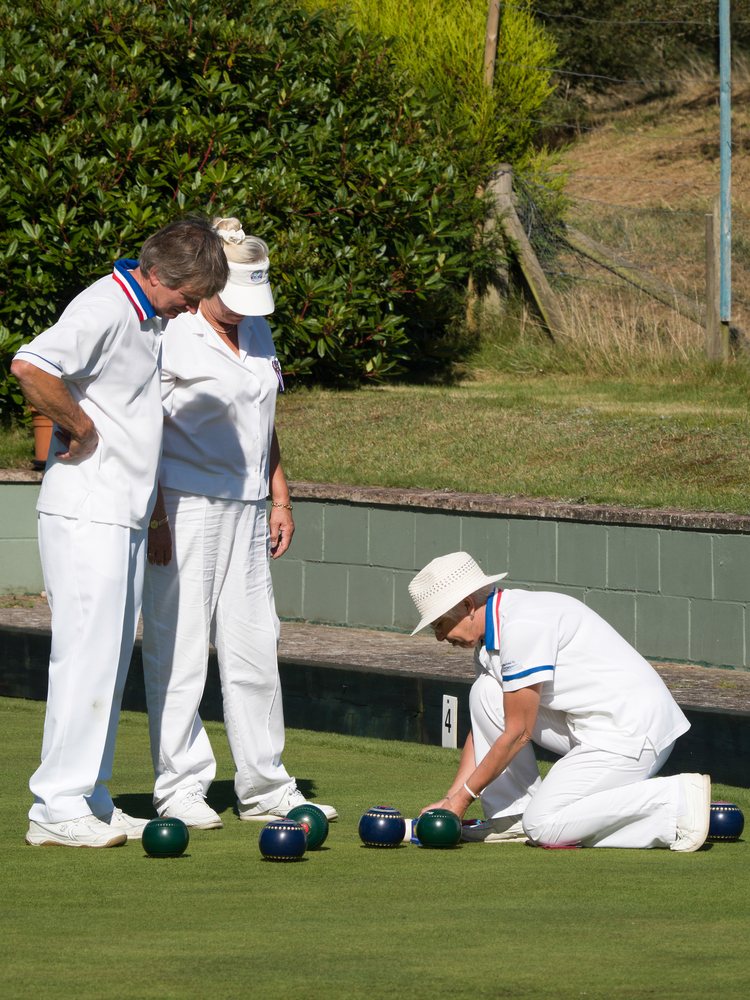
5. Strategy
Though the strategy in both bocce and lawn bowling involves getting as close to the target as possible, the means of achieving this will vary. The strategy in bocce generally revolves around precise throwing and occasionally displacing your opponents' balls. Since bocce balls are designed to roll straight, players must focus mostly on their aim and power.
The strategy in lawn bowls is a bit more complex due to the curving path of the bowls. Players must carefully consider the speed, curve, and potential obstacles (including other bowls) on the green. This requires a deep understanding of how the bowls move and the ability to adapt on the fly to the current conditions of the green.
6. Player Positions and Roles
In bocce, a team consists of two to four players. A player's role may vary depending on the situation. Some players specialize in delivering the first balls to establish a good position near the pallino, while others specialize in knock-out shots or precision tosses to displace an opponent's ball.
Every team will have to select a captain and a co-captain before the game starts. These players will lead the team.
In lawn bowls, teams may consist of two to four players as well, but the roles are typically divided as follows:
- The lead
- The second
- The third (or vice skip)
- The Skip (the team captain)
Here’s how the team lineup goes. The lead is the first to deliver bowls and is generally tasked with placing their bowls as close to the jack as possible. This is called “drawing.”
The second and third players perform a dual role of further strengthening their team's position or dislodging the opposition's bowls. They may need to pick up the slack should the lead fail to get any shots close to the jack.
The skip is the team captain and is generally the most experienced. They deliver the last bowls of the end, where strategic plays can be ultra-important.
But that’s not all; the skip is also the decision-maker for the team, making all the final decisions during play. They also talk to the umpire or other team’s skip in the event of a problem.
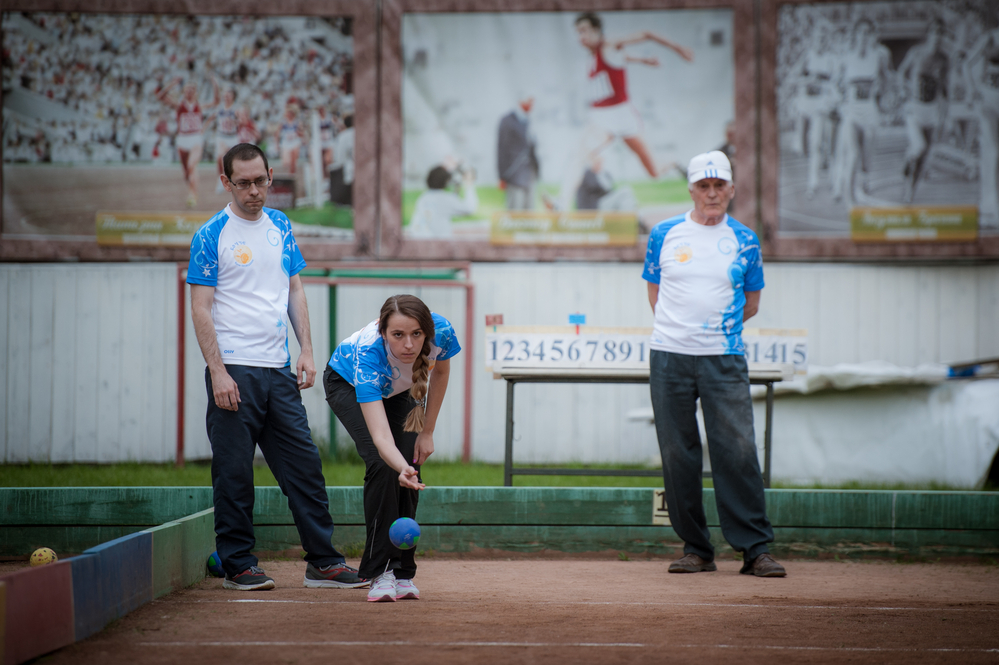
7. Common Tactics Used During Play
The strategic essence of both bocce and lawn bowls lies in understanding the game's physics and court conditions in addition to leveraging the positions of balls already in play.
- Volo. This is a shot where the ball is lofted in the air with the intention of knocking the opponent's ball out of the way.
- Raffa. Another tactic, "Raffa", involves throwing the ball to move the target or disrupt the balls nearby.
- Blocking. "Blocking" is a tactic where a player places their bowl in a position that makes it difficult for the opponent to reach the jack.
- Drive. The "drive" is a fast delivery intended to knock either the jack or another bowl out of position. This shot is often aimed directly at the target.
Players must always consider the bowl's bias (irregular shape and curved path of travel).
8. Cultural Significance and Popularity
Bocce and lawn bowls are more than just games; they're an integral part of the cultural fabric in many parts of the world. Bocce is a beloved game in Italy and is deeply ingrained in its social and cultural life. Public squares often have bocce courts, and the sport is a staple at family gatherings and festivals.
The game has also found popularity among Italian diaspora communities around the world.
The sport Lawn bowls, however, is synonymous with countries like the United Kingdom, Australia, and New Zealand. The game is often associated with a leisurely pace of life and is popular among the older demographic. In the UK, it's common to see local clubs hosting lawn bowls competitions on summer weekends.
9. Variations
Bocce and lawn bowls both have variations that are played around the world. Bocce has a few adaptations, such as "Open Bocce" (without a designated court), "Volo Bocce" (the ball must be lofted in the air), and "Raffa Bocce" (the specialty shots of pointing, hitting, and shooting are allowed).
Lawn bowls also have a few variations. "Crown Green Bowls" is played on a surface with a subtle dome shape, which adds another level of complexity to the game. "Indoor Bowls" is a variant that allows the game to be played indoors on smaller, artificial greens.
10. Rules and Penalties
Both games have established rules, and not adhering to them may lead to penalties. In bocce, stepping over the foul line before releasing the ball, or a ball hitting the back wall without first touching another ball, will lead to that ball being removed from the round. You also can’t throw a ball higher than the overhead lights.
In lawn bowls, delivering the jack or the bowl into the ditch (the boundary of the green) without touching the jack first, or a player from a team playing out of turn may lead to penalties such as loss of the bowl or the end.
11. Physical and Mental Benefits
Both bocce and lawn bowls offer numerous physical and mental benefits. They are forms of low-impact exercise that help improve hand-eye coordination, balance, and flexibility. They also stimulate mental acuity through strategic thinking, concentration, and precision.
Furthermore, they are great social games that promote camaraderie, sportsmanship, and communication among players. Whether you're young or old, these games provide a fun way to stay active and sharp.
Should You Play Lawn Bowling or Bocce?
Wondering which game is the best bet for you? When deciding between bocce and lawn bowls, consider your personal preferences, the resources you have available, and the aspects of each game that you find appealing.
Bocce ball is typically easier for beginners due to its straightforward rules and straight-rolling balls. It can also be played in a variety of informal settings, making it highly accessible.
Lawn bowls, on the other hand, offer more complex gameplay due to the curved path of the bowls. It usually requires a specially prepared surface, which may not be as readily available.
Both games are low-impact and can be enjoyed by people of varying fitness levels, although they do require precision and control. If strategic depth is important to you, consider that lawn bowls often require more advanced tactics due to the unique movement of the bowls.
However, if a game centered more around direct aim and power appeals more to you, then bocce may be your game of choice.
But remember that you don’t have to settle for just one of the two games. Give them both a try. You just might find that you fall in love with both of them.
Is Bocce and Lawn Bowling the Same?
Considering the differences we discussed earlier, bocce and lawn bowling are different. With that being said, there are some similarities you should know about.
- Basic premise. At their core, both Lawn ball and bocce ball rules make them precision sports. They both involve players or teams attempting to throw or roll balls to get as close as possible to a smaller target.
- Player participation. Both bocce and lawn bowls can be played individually or in teams. This flexibility allows for variations in gameplay, which can be adjusted based on the number of participants. It also makes both games suitable for various social settings, from family gatherings to larger community events.
- Objective. The primary objective in both games is to get your balls closer to the target ball than your opponent. Scoring in both games is determined by the proximity of your balls to the target.
- Outdoor setting. Both bocce and lawn bowls are traditionally outdoor games, making them popular choices for good weather and communal gatherings. You'll often see people playing these games at parks, picnics, and special clubs dedicated to the respective sports.
- Skill and strategy. Though the skills and strategies differ between the games, both require a degree of finesse, aim, strategy, and an understanding of the game's physics. In both games, players must gauge their throws'/rolls' strength and direction, and make strategic decisions based on the current state of play.
- Social and competitive aspects: Bocce and lawn bowls serve both as social games and serious competitive sports. They are often played casually in backyards, parks, and at social gatherings. At the same time, both have established competitive scenes, with national and international tournaments.
- Age-appropriate for everyone. Both games can be enjoyed by young and old alike. They don't require rigorous physical strength or agility, making them accessible to a wide range of people.
What Is Lawn Bowls Called in the USA?
In the United States, lawn bowls, is often referred to as "lawn bowling," but it's also commonly known by its international name, "bowls" or "lawn bowls." Bowls USA (BUSA) is the main governing body for the sport in the United States.
While not as prevalent as in the United Kingdom, Australia, or New Zealand, the sport does have a following in the U.S., with clubs in various states.
What Is Lawn Bowling Called?
Lawn Bowling is commonly known as "Bowls" or "Lawn Bowls" in many parts of the world. The sport is also occasionally referred to as "Flat Green Bowls" due to the flat, smooth surface it is played on, particularly to distinguish it from "Crown Green Bowling," a different variant of the game. However, the most widely accepted and used terms are "Bowls" and "Lawn Bowls."
What Is Another Word for Lawn Bowling?
Another term for "Lawn Bowling" is simply "Bowls." The game is also occasionally referred to as "Flat Green Bowls."
In some regions, it might be referred to as "Outdoor Bowls" to differentiate it from the indoor version of the game. However, "Bowls" and "Lawn Bowls" are the most universally understood terms.
Frequently Asked Questions
What is the Italian game that is similar to lawn bowling?
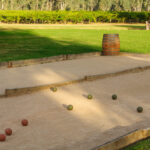
Bocce ball
Bocce ball is the Italian game similar to Lawn bowling. It is a target game, played on sandy courts instead of a bowling green or bent grass, and the object of the game is getting close to the target ball, called a pallino.
Is bocce and lawn bowling the same?
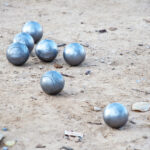
No.
When you compare lawn bowling and Bocce, they are not the same, but when they are very similar. Their main similarities are they are both target games, and the target is a smaller ball.
Two of the biggest differences between Bocce and Lawn bowling is the playing field. Bocce is played on a court of sandy materials, and lawn bowling requires a bent grass playing surface.
The second difference the playing ball. Bocce is played with a perfectly round sphere, while Lawn Bowling is played with an uneven, unusual shape ball that curves.
Is bocce ball an old person game?

Honestly... it was. But, the face of Bocce ball is changing.
Bocce ball, as it was once thought of, is changing and regaining traction with a new demographics. Bocce ball is not just an outdoor game, and more of them are becoming popular indoors and in social places of all ages.
Related Articles
- What are the rules for Lawn Bowling?
- Lawn Bowling Comprehensive guide
- How Much Is a Strike in Bowling
So, there you have it - an in-depth comparison between bocce and lawn bowling. We hope you found all the information you were looking for, and we wish you the best as you explore lawn games!
Kira Byrd, a Certified Fraud Examiner, holds a B.S. in Accounting from the University of Alabama at Birmingham. With a passion for bowling from her childhood, Kira has poured her expertise and personal experiences into creating and nurturing Bowling For Beginners. Kira's mission is to meet new bowlers where they are and guide them toward consistently achieving higher scores. With a focus on skill development and strategic techniques, she empowers readers to take control of their game and unlock their true potential.
Bowling For Beginners embodies strict editorial integrity, ensuring reliable and unbiased information. Kira's commitment to delivering valuable insights and practical strategies is reflected in every article. Here's an explanation of our editorial policy and how we get money.


